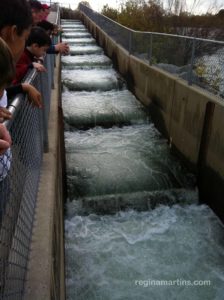Printing ink is expensive. Ink-jet printer ink, that is. Well, really any good quality ink, such as that used by artists, is liable to cost.
I am endeavouring to apply a new way of thinking, some refer to it as a ‘reframe’.
My printer cartridge has run out and I need to buy a replacement. I apply the mental reframe by thinking not about what it will cost, but rather what I will be able to do with it.
Also, I can think of my printing ink as economical if I think of ink that costs more, so that my fresh, new cartridge seems inexpensive by comparison. The ink I am referring to is the ink used to print images on birthday cakes. Have you seen them? It’s edible ink and it is rather expensive, but what beautiful, creative cakes can be made using that system! I would never have imagined that it would be possible to make that kind of ink edible.
Ink jet printer ink has to have some special properties in order to work. The printing head is like a miniature spray gun squiring out one minute drop at a time, rapidly, and the ink has to be electrostatically charged so that it can be aimed by the printing head at a particular position on the paper.
If I were to have another career, I would choose to be a baker. I enjoy baking breads and apple pies and carrot cakes… Now I’m thinking of all the creative things I could do with edible ink images. Imagine a banana loaf, covered in white icing with cute little yellow bananas printed all over it. But imagine, if to the ink, we could add flavours as well, so that the little printed bananas actually tasted like real banana. Imagine a whole cake, shaped like a pineapple, tasting of pineapple. Carrots on a carrot cake…
This opens up a whole new world! Take edible ink, that can be flavoured to any taste you want, making any food you want become possible. I have a vision of the engineering 3D printer, used to make prototypes, moving from the engineering and design world and into the kitchen. A hot dog marvelously printed out in seconds!
And not just any hot dog, this is a designer Hot Dog. Hotel kitchens and restaurants everywhere will be moving into a new era of dish experimentation. No more, the hours spent slaving in steamy kitchens. Chefs, like Gordon Ramsey and Jamie Oliver will be clamouring to get the latest version of MSkitchen, a CAD system for designer cooks. Trial and error in minutes and seconds instead of hours and days, all done digitally to perfection. Dishes prepared from drop down menus. Chefs storing their libraries of good ideas to be retrieved at the click of a mouse, to create endless combinations, viewed from any angle, tastes intensified or reduced using slider controls and radio buttons, all improved virtually until the chef is satisfied and his creating arrives magically out of the 3D printer!
Backpackers and survival enthusiasts will no longer need to be weighed down by heavy rations. They will only need their MacBook and portable 3D printer, instantly able to print out delicious food. Likewise astronauts on the International Play Station, no longer forced to live on boring food squeezed out of what looks like a toothpaste tube. Wonderful food printed fresh everyday. Macdonalds will finally be able to make every Big Mac identical to every other Big Mac, print after print after print. Not fast food… Instant food.
Now if I can just finish sorting out how to combine this whole lot with my microwave, I will have a way to serve it … Hot!
Chef Ed
